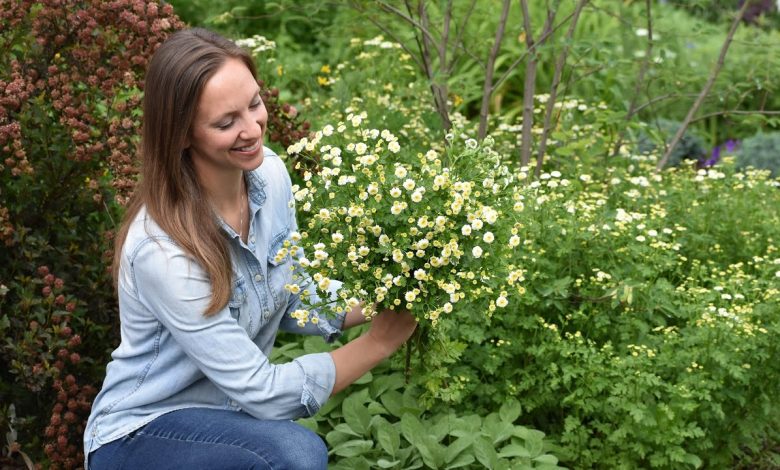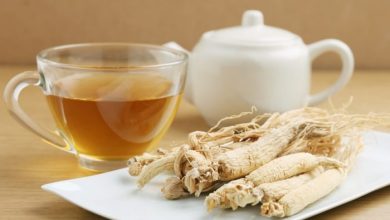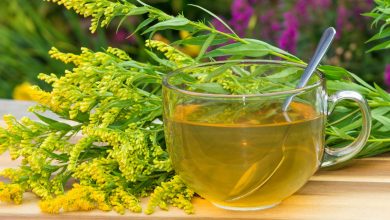How to Grow and Harvest Feverfew Seeds for Maximum Health Benefits

Feverfew and its Health Benefits
Feverfew is a medicinal herb with numerous health benefits that have been known to humans for centuries. It has historically been used to treat headaches, arthritis, fever, indigestion, and menstrual pain. Additionally, it is often referred to as an anti-inflammatory and has been used as a natural remedy for many ailments. Feverfew is very easy to grow in home gardens or as a potted plant on your windowsill. The most common way of consuming feverfew is through the ingestion of its seeds. To maximize the robust health benefits that this plant offers, it’s important to know how to properly grow and harvest feverfew seeds.
Starting Seeds Indoors
The best way to get started growing feverfew is by starting the seeds indoors several weeks before the last average frost date in your geographical area. To do this, fill a container with potting soil or seed-starting mix and moisten thoroughly. Plant one or two feverfew seeds in each container about 1/4 inch deep into the soil and cover lightly with more soil or seed-starting mix. Place the containers in an area where they will receive plenty of sunlight – either near a bright window or under artificial lighting – and water regularly until germination occurs (usually within 2 weeks). When the seedlings are large enough to handle, carefully transplant them into larger pots filled with good quality potting soil so that they can develop further root systems until they are ready for outdoor planting.
Planting Outdoors
Once all danger of frost has passed and your seedlings have established strong root systems from their indoor pots, it’s time to transfer them outside into their final growing location in a sunny area of your garden with well-draining soil. Dig small holes twice as wide as the roots of your seedlings and incorporate some compost or other organic matter into the soil for additional nutrients. Plant each perennial about 18 inches apart so that there’s room for them all to spread out once they become full grown plants. Once planted outside, be sure to water regularly so that the soil doesn’t dry out completely during hot summer days.
Harvesting Seeds
Feverfew produces daisy-like flowers that contain viable seeds used for harvesting purposes; however, it takes up about two years for flowers -and subsequently seeds -to become available from newly planted perennials so patience is key! Once flowers appear towards midsummer at about 3-4 months after planting outdoors you can begin collecting seeds by hand by cutting off flower heads just after they’ve bloomed but before their petals have curled up like little bowls around the middle button part where the seeds are held inside; then lay them out on newspaper or paper towels and allow them to dry completely before storing them in airtight containers away from direct sunlight.
Grow Feverfew Seeds for Optimal Health Benefits
Feverfew seeds are rich in a variety of beneficial nutrients and have been used in traditional medicine for centuries. Growing your own feverfew can provide you with a natural way to supplement your diet with this powerful herb. With just a few simple steps, you can successfully grow and harvest feverfew seeds for maximum health benefits.
Choose the Right Location
When growing feverfew, it is important to choose the right location as this will impact your success rate. This herb prefers full sunlight but can also tolerate partial shade. Feverfew should also be planted in soil that has good drainage and is slightly acidic. The soil should also be rich in organic matter for optimal growth.
Sowing the Seeds
When it comes time to sowing feverfew seeds, you must first prepare the soil by loosening it up and removing any weeds or debris. After this is done, sprinkle the feverfew seeds on top of the soil making sure to leave some room between each seedling. Once these steps are completed, cover them lightly with a thin layer of compost or soil and mist lightly with water until damp but not soaking wet.
Caring for Plantings
Once your feverfew seeds have been planted properly, caring for them is essential for successful harvests. They should be watered regularly but not overly saturated as too much water can lead to root rot which will kill the plantings. Additionally, they should be fertilized every couple of weeks with organic compost or fish emulsion fertilizer to ensure proper nutrition and growth at least until they reach their mature size and flowering stage.
Harvesting Feverfew Seeds
Once your feverfew plants have reached maturity and flowered, you can then harvest their seeds by cutting off dried flower heads and placing them into paper bags or envelopes so that they don’t spread all over the garden bed while harvesting them from other plants. Once collected, these seed heads should be dried completely indoors before storing in an airtight container until ready for use either in cooking or herbal remedies.
Tips for Preparing Feverfew Seeds for Consumption
One of the best ways to enjoy the health benefits of feverfew is through consuming its seeds. Feverfew seeds are incredibly nutritious and can provide a range of health benefits, including relief from headaches, inflammation, nausea and menstrual cramps. To get maximum advantage from these health benefits, it’s important to understand how to grow and harvest feverfew seeds correctly. Here are some tips on preparing feverfew seeds for consumption.
Growth Conditions
Feverfew requires full sun for optimal growth. It can tolerate partial shade but won’t grow as vigorously in such conditions. Soil should be kept moist but not soaking wet, and it’s important that the soil drains well, as standing water can lead to root rot. The pH level should be between 6.0 – 8.0.
Planting & Germination
Feverfew is usually propagated from seed planted indoors 4-6 weeks before the last frost date in your area. Plant the seeds 1/4 inch deep in small peat pots or similar containers filled with a light potting mix made up mostly of compost or aged manure with a small amount of sand mixed in. Keep the temperature consistently warm (70°F) and moist. Germination will occur within 7-21 days.
Harvesting & Drying
Once established, feverfew is simple to care for and maintain with regular watering and occasional fertilization during the active growing season (spring through summer). When harvesting feverfew seeds, wait until after flowering has finished and seed heads have dried out; they should look like papery balls when ripe. Gently cut off the seed heads with scissors or pruners, then spread them out on newspaper or paper towels in a dry location to finish drying out.
Storage & Consumption
When completely dry, store feverfew seeds in an airtight container in a cool dark location until ready for use. Feverfew can be consumed as tea or supplements made from finely ground powder produced by crushing dried seeds using mortar and pestle or similar tools; it can also be chewed directly when fresh or lightly roasted if desired.
By following these steps you can ensure that your feverfew plants are grown correctly and harvested efficiently for maximum health benefits associated with consumption of their nutritious seeds!
Potential Side Effects of Consuming Feverfew Seeds
While feverfew seeds boast numerous health benefits, it is important to note that they also contain potential side effects. Feverfew seeds are known to interact with certain medications, most notably blood thinners and aspirin. As such, individuals who are already taking medications for conditions like high blood pressure or diabetes should speak with their f before consuming feverfew seeds in order to prevent any negative interactions. In addition, pregnant and nursing women should avoid using feverfew altogether in order to safeguard the health of their unborn or newborn child. Feverfew seeds can also cause an allergic reaction in certain individuals; symptoms of an allergic reaction include rash or hives, swelling of the throat or face, difficulty breathing, and chest tightness. Anyone experiencing any of these symptoms after ingesting feverfew seeds should seek immediate medical attention. Finally, although rare, consuming too much feverfew can lead to stomach upset and possibly cluster headaches if taken on a regular basis.




